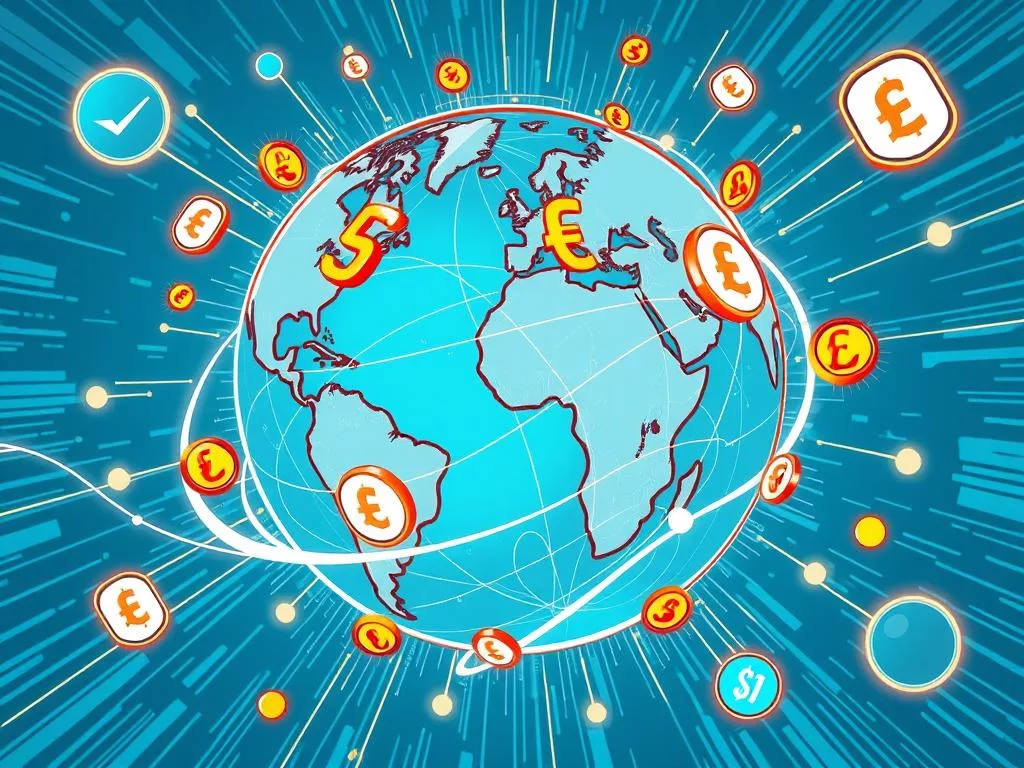In today’s world, PayPal is a key player in online payments, with over 429 million users worldwide. But, figuring out PayPal’s international fees can be tough for both people and businesses. This guide to PayPal fees helps clear up the confusion around these fees.
PayPal’s fees can change the cost of your transactions. They depend on where you send and receive money, the currency, and how you pay. For example, sending money abroad might cost about 2.9% of the amount, plus a fixed fee based on the currency.
Knowing these fees helps you make better choices and save money on international payments. Whether you’re a business owner or someone sending money to family, understanding PayPal’s fees can lead to big savings.
Overview of PayPal’s International Fees
When you send or receive money across borders with PayPal, you face different fees. It’s key to know these fees to manage your money better. PayPal charges a minimum of 5% for international payments, plus fixed fees that change with the currency.
Using a credit or debit card adds another fee, about 2.9% of the transaction. There’s also a fixed charge of around 30¢, depending on the currency. The total cost can change based on the transaction type and currencies involved. This is important to avoid unexpected fees in international payments.
Understanding PayPal’s fee structure can prevent surprises. Here’s a table that shows the main fees for international transactions:
| Transaction Type | Fee Structure |
|---|---|
| International Transfers | Min 5% + Currency Fixed Fee |
| Credit/Debit Card Payments | 2.9% + 30¢ (varies by currency) |
| International Personal Transactions | €1.99 or €3.99 (depending on market) |
| Currency Conversion Fee | Up to 3% above base rate |
| Withdrawal Fees | Varies by region (up to 3%) |
| Micropayments | 5% DOM; 6% INT + Currency Fixed Fee |
PayPal’s International Transaction Fee Structure
The PayPal fee for international transfers is clear and detailed. Different types of transactions have their own fees for sending money abroad. A standard transfer costs 5.00%, with fees ranging from 0.99 USD to 4.99 USD based on the amount.
Converting currencies adds extra costs. Fees for currency conversion range from 3% to 4%. For goods, services, and family transfers, it’s 4%. General transactions cost 3%.

Businesses might pay more, depending on how they fund transactions. Credit card payments can add up to 2.90% plus fixed fees. International business transactions add another 1.50% fee.
Fixed fees change based on the currency. Receiving Euros costs 0.39 EUR, while Australian dollars cost 0.59 AUD. Knowing these fees helps plan for international payments better.
Looking for ways to save on international payments? Check out this guide on reducing payment costs.
Guide to Does PayPal Charge International Fees
PayPal charges fees for international transactions. These fees depend on several factors. The type of transaction, the countries involved, and the currencies exchanged all matter.
For online purchases, the fee can be up to 4.4% plus $0.30 per transaction. Physical store transactions have a fee of 4.2% plus $0.30.
Currency conversion charges also affect the total cost. PayPal charges a 2.5% fee on the amount received. This adds to the overall expense. Users should check the PayPal fee guide to understand these fees.
Standard rates apply to more than just online payments. Sending money to another PayPal account costs 5% when using a balance or bank account. Using a credit card adds an extra 2.9% plus a fixed rate based on the currency. Knowing these fees ahead of time helps avoid surprises.

Registered charities get a fixed fee of 2.2% plus $0.30 for each donation. PayPal Here for business transactions has fees ranging from 2.7% for US card swipes to 3.5% plus a fixed fee for manual transactions. Each of these adds to the question of does PayPal charge fees for international money transfers.
Tips for Reducing PayPal’s International Transaction Fees
Reducing PayPal fees can make a big difference in your international transactions. Verifying your account is a key strategy. It often unlocks lower fees for each transfer. This way, you can save money and get better terms for sending money abroad.
Another effective method is to make larger payments instead of many small ones. This helps avoid the fixed fees that add up with multiple transactions. Also, sending and receiving in the same currency can save you from extra conversion charges. This boosts your savings even more.
Choosing bank transfers over credit or debit cards can also save you money. These cards usually have higher fees. Looking into different payment platforms can also lead to better rates for regular transactions. By being smart about your payment choices, you can cut down on PayPal’s international fees.

